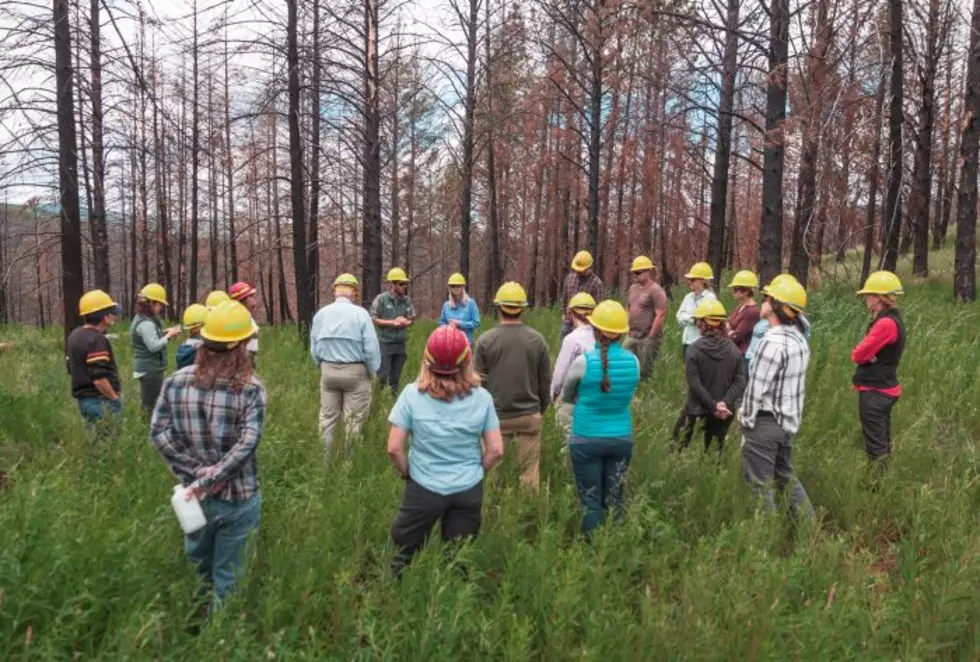
Public-private effort replants intensely burned acreage on Lolo Peak
A few more young trees are growing on the slopes of Lolo Peak, thanks to the Lolo National Forest and the National Forest Foundation.
Wildfires are just beginning to pop up around Missoula, but at this time two years ago, lightning had already sparked the Lolo Peak fire. A few months later, it had burned almost 54,000 acres west along U.S. Highway 12 and south along Highway 93 into the Bitterroot Valley.
Driving through the burned area now, visitors might focus on the large red patches of burned forest. But those who look a little closer can see young trees coming up among the grass, wildflowers and shrubs that have filled in around the blackened pines.
That’s not happening everywhere, however. In a post-fire analysis, wildfire experts identified a few areas totaling 270 acres that need a little more help to recover. U.S. Forest Service foresters would need to take matters into their own hands and replant those areas.
“Although fire is a natural part of the ecosystem in this area, some places within the burned area experienced intense fire activity causing high tree morality rates and leaving little natural seed source for regeneration,” said Jennifer Hensiek, Missoula district ranger. “The goal is to help nature along with the regeneration process by re-establishing seedlings in these areas.”
To be effective, foresters must replant trees within two years after a fire. Otherwise, weeds and trees that are less desirable can move into the newly open areas, making them less resistant to erosion and less hospitable to native wildlife.
Time is of the essence, but replanting hundreds of acres takes labor and money, and it’s not always easy to find enough money on relatively short notice. With a dwindling and overburdened USFS budget, district rangers don’t have much of either, especially after a big fire year like 2017.
In the past, district rangers could turn to the Reforestation Trust Fund to buy seedlings, although the fund can be drained by requests for other reforestation needs. Congress can allocate up to $30 million to the fund every year, and it usually has.
But there’s lag time of one to two years with congressional funding, and $30 million doesn’t go far enough anymore with the multiple megafires that have erupted over the past two decades.
That’s where the National Forest Foundation comes in. In May 2018, knowing the challenges facing the Forest Service, the foundation started raising $50 million to plant 50 million trees on national forests within five years.
Raising that much money isn’t easy, but the organization raised enough – $30,000 – to get a matching grant from the USFS to plant 65,000 native ponderosa and western larch seedlings in the Mormon Creek and Lolo Creek watersheds.
“Though so much of our work is national in scope, this project was a great opportunity to help the Lolo National Forest right in our backyard. We’re grateful for the support of our small business and individual contributors and equally appreciative of our Forest Service partners that allow this important work to happen,” said Wes Swaffar, the foundation's director of reforestation and partnerships.
Forest Service employees did the planting in May, using seedlings from the Coeur d’Alene USFS Nursery, where they were raised using seeds harvested at similar elevations to the Lolo Peak fire. June’s cool wet weather made this year perfect for planting, providing the seedlings the right conditions to become established. It’s expected that a majority will survive into next summer. USFS personnel will monitor the seedlings’ progress for the next several years.
“This project was possible because of the strong partner we have in the National Forest Foundation,” said Hensiek. “We are grateful to have them at the table for recovery projects such as this one, and we are also excited to look to the future and work with them on Wildfire Adapted Missoula to help create more resilient landscapes around Missoula in the face of future wildfires.”
Contact reporter Laura Lundquist at lundquist@missoulacurrent.com.
